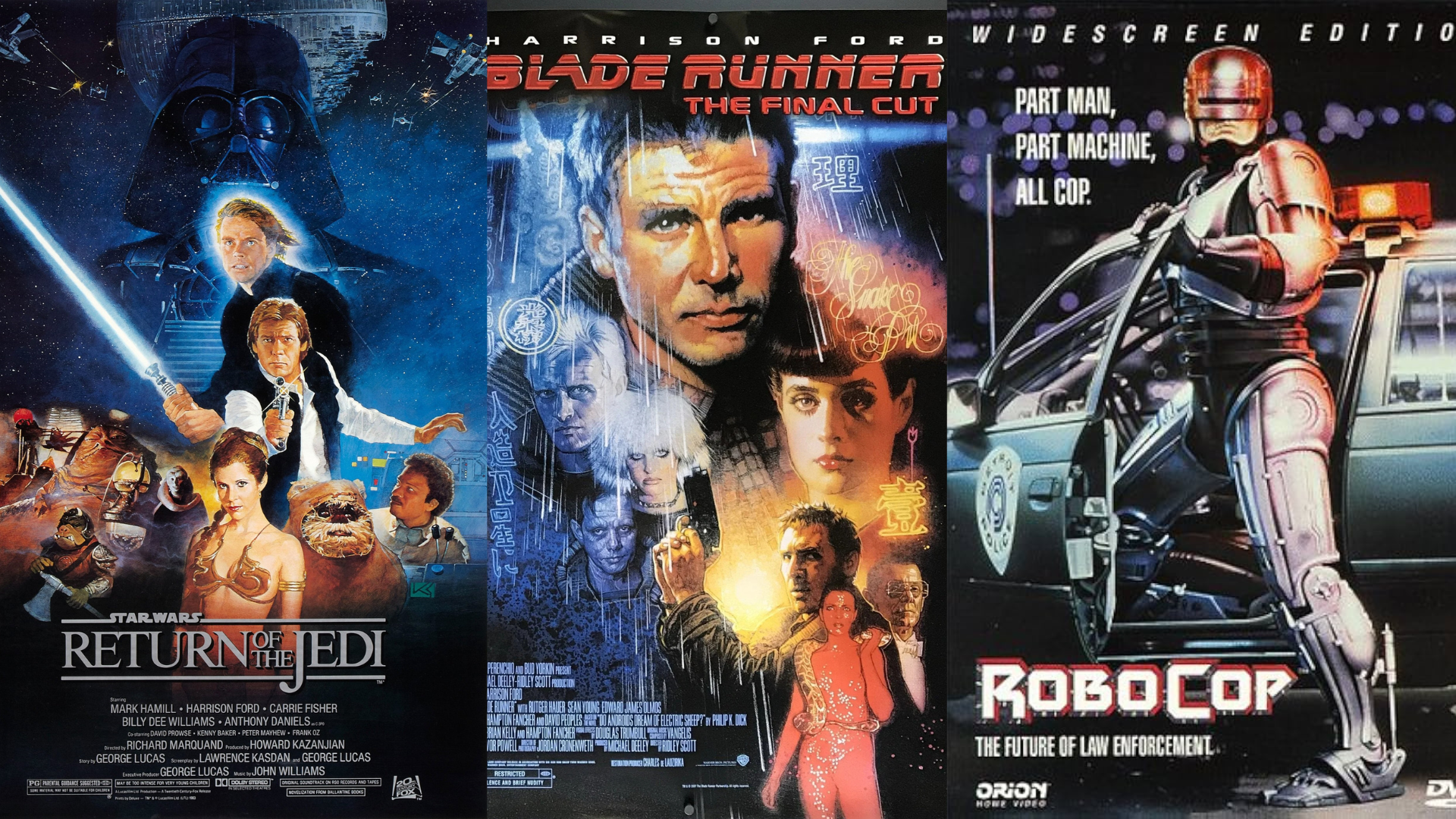
Blade Runner (1982) & RoboCop (1987)
There has been a shift in the approach to the science fiction genre, with the emphasis perhaps being less on the critical reflection of reality and more on the low-key blockbuster style and the fantasy edge. Science fiction did not produce the blockbusters we know today until the 1980s (Cornea, 2007).
Several factors influenced US science fiction film production after 1950 (Geraghty, 2009). The 1950s, often called the ‘golden age’ of science fiction movies, coincided with the Cold War (Cornea, 2007; Geraghty, 2009). The fear of communism, for example, could be indirectly expressed in invasion stories about aliens (Cornea, 2007). The discovery and use of nuclear weapons during the Second World War led to a widespread ‘cultural paranoia’ that was reflected in science fiction films, often in the form of stories of destruction and dystopian futures. Some films were known as ‘bomb movies’ and used a threatening or post-apocalyptic scenario as a plot device to hide other issues (Cornea, 2007). Films like Star Wars and Close Encounters marked in the 1970s and 1980s the rise of the science fiction blockbuster. They were characterised by high budgets, massive audiences, and a focus on action and spectacle (Cornea, 2007).

Where does E.T.: The Extra-Terrestrial fit into this picture? While the film also offers escapism, it lacks a clear political message. Instead of nationalism, E.T. preaches peace and friendship between different beings (Geraghty, 2009). This sets the film apart from other blockbusters full of action and political undertones.